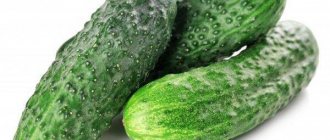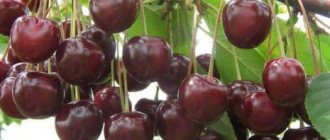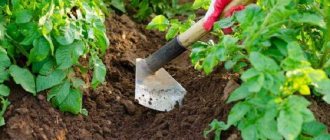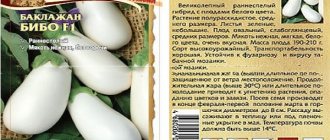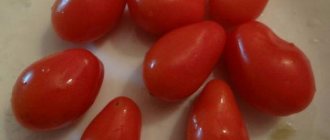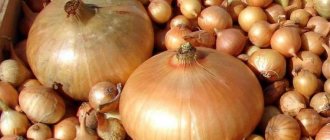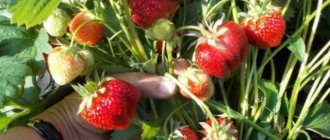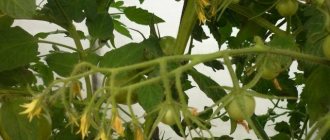Onions are added to all the main dishes of our cuisine. Its piquant taste enriches them and makes them healthier. Gardeners grow different varieties of onions, among which Shetana stands out. This is a mid-early variety that tolerates open ground and frost conditions well, has excellent taste and produces a rich harvest.
| Maturation | Type | Color | Life form | Taste |
| Mid-early | Bulb | Golden | perennial | Mild-sharp |
Main characteristics
The table provides a brief description of the variety according to the main indicators:
| Parameter | Characteristic |
| Culture | Onion (Allium cepa L.) |
| Variety | “Shetana MS” (“Shantane”, “Brown-haired”, Shetana ms) |
| Ripening time | Mid-early: the period from full germination to mass lodging of leaves is 88-98 days (from seeds) and 64-87 days (from sets); according to some sources the average is 100-102 days |
| Plant type | Peninsular |
| Purpose | Universal |
| Growing conditions | Homestead cultivation, commercial production, |
| Productivity | High: 3-6 kg/m2 (up to 8 kg/m2); in industrial plantings – up to 43.5 t/ha |
| Bulb weight | 44-46 g (from seeds) and 64-88 g (from sets) |
| Form | Round |
| Scale color | External (dry) straw yellow; internal (juicy) – white |
| Taste qualities | Spicy, semi-spicy, juicy |
| Storage duration | 9-12 months |
| Year of entry into the State Register of the Russian Federation | 1998 |
| Recommended growing regions | Central (3) and Middle Volga (7) |
| Originator | IP Aleksashova Marina Vitalievna (Moscow) |
The ripening rate of “Shetana MS” bulbs at the time of harvesting is 83%, after ripening 95%
When to harvest?
The harvest needs to be done when the feather begins to dry out , approximately 100 days after the emergence of seedlings from sowing with seeds and 80 days when planting with sowns.
Harvesting is carried out in dry weather at the end of July, beginning of August, depending on the region. The signal is yellowing of the green part and upper scales of the bulb.
The yield of Shetan onions, subject to the conditions for growing the variety, in the conditions of the southern regions is up to 20 kg per sq. m., in the climate of the central regions - about 5 kg per sq. m.
Productivity
In the southern regions of our country, the variety is cultivated as an annual crop, sowing seeds in open ground in winter or spring. Vegetable growers in the Central and northern regions, in Siberia and the Urals get the best results using the traditional method of planting sets. According to experts, the largest bulbs are formed when grown by seedlings, which, although more labor-intensive, more reliably ensures high yields. To achieve maximum productivity, plants require regular watering at the initial stage of growth, as well as fertilizing with organic and mineral fertilizers, which are carried out 5-6 times per season.
It is recommended to mulch the soil in the beds or constantly weed and loosen them to prevent the formation of a soil crust
The results of 2-year field trials conducted at the experimental site of St. Petersburg State Agrarian University (Leningrad Region) confirm the fairly high marketable yield of the variety: 9.2 t/ha (3 t/ha below the Karatalsky standard). The yield and characteristics of the “Shetana MS” onion set were determined by the density of the plants.
According to the originator in the Central region, the marketable yield of turnips grown as an annual crop was 5-5.8 t/ha (at the level of the “Strigunovsky local” standard); in the Middle Volga region, when cultivated in a two-year crop, 25.9-29 t/ha were obtained (at the level of the Tatar and Carmen MS standards). The maximum yield of marketable turnips from sets was recorded in the Moscow region: about 43.5 t/ha (16 t/ha higher than the Carmen MS standard).
The yield and quality of bulbs largely depend on climatic and weather conditions, the mechanical and chemical composition of the soil, and the intensity of agricultural technology used
Fertilizer application
For normal growth and fruiting, the soil must be saturated with useful substances. Fertilizing is done while digging the bed, before planting the vegetable. Young sprouts also need a new portion of fertilizers. During the entire growth period, the crop is fed no more than 3 times. Nitrogen, potassium or phosphorus are chosen as fertilizers.
See also
When should onions be harvested for storage in the Moscow region and region in 2021? Read
Mature bulbs are dug up and placed in fresh air until completely dry. After this, you can transfer it to a storage room.
Commercial and taste qualities of bulbs
The bulbs are aligned, round in shape. The neck is of medium thickness. Dry (outer) scales are medium-dense, bronze or straw-yellow; juicy (internal) – white. According to reviews, Shetana MS onions have a spicy, semi-sharp taste with a classic aftertaste and aroma.
The main quality indicators of onions depend on the chemical composition, which determines the nutritional value and taste properties, as well as the keeping quality of the harvested crop.
Onions “Shetana MS” are widely used in cooking: they are perfect for fresh consumption, cooking any dishes and for processing
According to the originator, the bulbs of the variety contain:
| Useful and nutritious substances | Contents per 100 g of product |
| Sahara | 6.3 g |
| Vitamin C (ascorbic acid) | 7.2 mg |
| Dry matter | 12 g |
Shetana onion: description of the variety
The described variety is considered high-yielding, but the yield will depend on the region where it is grown. For example, in the central regions of Russia, the yield is approximately 50–60 centners per 1 hectare of plantings. In more southern areas it can reach up to 200 c.
This variety has very good ripening and high keeping quality. Under the right storage conditions, Shetana onions do not lose their presentation until spring. Keep it in dry rooms with an air temperature of 15–20 degrees.
Recommendations for agricultural technology
Planting material for the variety is produced by many large agricultural companies in our country. For ease of planting, seeds are produced in granulated or pelleted form, as well as placed on special belts; The sets are produced in various packaging (from 0.5 kg). Purchased seeds, as a rule, undergo special preparation, which guarantees fast and friendly germination; active growth in the early stages; plant resistance to diseases and weather stress; uniformity of vegetable products and high taste.
The photo shows seeds in packages from various manufacturers.
For propagation, you can use your own “nigella” seeds, collected from mother plants of the second year of growing season. However, in order for varietal yield and stability indicators to remain at the proper level, planting material should be regularly updated, giving preference to trusted producers.
Correct placement of seeds during sowing increases productivity and improves the quality of the bulbs. With excessive thickening in the row, the size of the heads decreases, and with sparse sowing, it increases. Large heads often develop in the edge rows, and small ones in the middle. The optimal distance is 7-8 cm between plants; with denser sowing at intervals of 3-5 cm, the beds are thinned out using torn green onions for current consumption.
Onion sets “Shetana MS” can be planted both in spring and autumn
plant spring onion sets on turnips in late April - early May, when the ground is still saturated with moisture from melted snow, the daytime temperature remains at 10-12 degrees Celsius, and at night does not drop below +2...5 ℃. First of all, small fractions are planted, and a little later large-caliber bulbs. When planting in spring, seedlings appear on the 9-12th day.
Pre-winter planting of sets saves the time of the hardworking summer resident in the spring; the first harvest of green onions ripens 1-1.5 months earlier; “onion” grows hardy, resistant to diseases and practically does not bolt. Experienced vegetable growers plant seedlings a month before the onset of the first “hard” frosts, in October - November. At the same time, it is better to delay the deadlines a little than to plant too early.
The leaves are medium-sized, semi-erect, emerald green with a slight waxy coating.
Planting care is standard - watering, regular loosening of the soil, application of fertilizers. You can read more about agricultural technology in the article “When to plant onion sets in the spring” on our website.
Growing from sets
The set of this variety is a bulb 1-3 cm in diameter with light yellow scales. Upon inspection there should be no damage or rotten areas; all such bulbs are discarded.
Preparing onion sets
Growing onions from sets requires little preparation of planting material.
- For sowing, you need to select only healthy bulbs, without damage or rot, no more than 2 cm in diameter, because they germinate faster, and for winter planting it is better to select seedlings no more than 1 cm in diameter.
- After selection, so that the onion does not shoot arrows in the future, first, before planting, you need to warm it up in a warm room or near heating for 3 days.
- After this, for a better effect, you can soak the heated bulbs first in a solution of mineral fertilizer for about 7 hours, and finally dip them in a solution of copper sulfate for 1 minute to protect against fungal diseases.
Landing
The planting depth of the sets is 4 cm. You can plant them in any convenient way, for example, in a furrow or under a peg, squeezing a hole in the ground for each bulb.
Planting pattern: between rows there should be at least 20 cm and in rows between individual bulbs at least 8 cm.
Advantages and disadvantages
The variety, like any other varieties of onion crops, has its pros and cons, but advantages : excellent taste of the fruit; beautiful presentation; good transportability and long shelf life subject to temperature conditions; uniform germination of seedlings and high yield; low susceptibility to fusarium rot.
The main disadvantage is considered to be a strong susceptibility to peronosporosis (downy mildew), which during the years of mass spread of the disease can significantly worsen the ripening of the bulbs and reduce their keeping quality.
In the photo - onion leaves affected by downy mildew
Downy mildew (peronosporosis) is a fungal disease. It develops especially strongly in humid, warm weather. The mushroom overwinters in the soil, on old unharvested plants and in bulbs during storage. Initially, pale green spots appear on the leaves of the onion, later they acquire a grayish-purple coating. The tips of the feathers turn yellow and die.
Factors that provoke the disease can be errors in agricultural technology:
- the bed has no direction from north to south and is poorly lit by the sun. Sowing seeds and planting sets is thickened and clogged with weeds;
- the sowing was not pre-warmed at a temperature of 30-35 degrees for 8-10 hours;
- onion seedlings that reached a height of 10-12 cm were not sprayed with a solution of copper-containing preparations (1 tablespoon of copper oxychloride and 1 tablespoon of liquid soap per 10 liters of water);
- if a disease is detected, do not stop watering and fertilizing with nitrogen fertilizers;
- The turnips were harvested too early, while the leaves were green;
- After harvesting, ripe bulbs were not dried in the sun or in a well-ventilated area for 12-14 days.
Tillage
Any activities with soil begin after the plant has time to take root in the soil. For better ripening of the bulbs, weeds are regularly removed between rows. Pests take away space for normal development and feed on beneficial substances from the soil that were intended for onions. The weeding procedure is carried out every week.
Reviews from gardeners
Andrey, 36 years old, Krasnodar region
Excellent Shetana onion variety! Thanks to the breeders and producers. We prepared the seedlings at home; the seeds were not soaked, but sown dry, one at a time, in plastic cups. Covered with film and placed in a warm place. Everyone has ascended. After transplanting to the garden bed, the survival rate of seedlings is 100%. As soon as the feather has died and covering scales have appeared on the bulb, it is easily pulled out of the ground. If left too long, the onion will take root again (especially in rainy weather). Such a harvest does not last long. We store ripe turnips in the refrigerator or in the cellar. Very tasty! The bulbs are dense, semi-sharp, without bitterness. Suitable for salads and marinades. Well suited for baking with fish and meat. Our children love these pies.
Veronica, 42 years old, Ulyanovsk region
To ensure that the heads are large, even and beautiful, I carefully sort the sets by size. I plant the larger bulbs along the edges of the bed, and the smallest ones in the middle. I definitely water, loosen the soil, and weed. I get a stable harvest, which is in high demand in the market. The upper scales of the spherical heads are golden brown and hold tightly. Buyers show interest in this onion and ask about the variety. We collect onions in mid-August. Until mid-June I water regularly, then according to the condition of the plants. I stop watering when the bulb begins to ripen. Excess moisture will cause the crop to be poorly stored. It happens that it is impossible to influence this: last summer it rained for a month. I place the harvested crop to dry in a shaded and well-ventilated place. I lay out the heads in one row and turn them over from time to time. For storage I use nets or tie them in braids. This onion can be stored without problems until the next harvest. Even if a small part fades, it does not upset us. A storehouse of vitamins is provided until next spring; we eat with pleasure with the whole family.
Svyatoslav, 72 years old, Kazan
I like Shetan bulbs; I always add them to meat, fish and vegetable dishes. Home preservation is generally not complete without them. I believe that the variety does not need special care. It is one of the most trouble-free vegetable crops and does not require any extra hassle around the garden bed. Planted, loosened, watered and fed if necessary - that’s it! I feed 2-3 weeks after germination: I water the beds with a solution of urea (carbamide) 10-12 g per 10 liters of water or ammonium nitrate - 15 g per 10 liters of water. An infusion of granulated chicken manure (300-500 g per 10 liters of water) gives good results. From personal experience I will add: excess fertilizers, especially nitrogen ones, can worsen the quality of the crop. The bulbs will turn out larger, but will not be stored well. I carry out the second feeding 3 weeks after the first, only with potassium and phosphorus fertilizers (potassium monophosphate). Throughout the season, you can add mineral complexes. They have an excellent effect on the growth of the above-ground and root parts, and improve the taste of feathers and turnips. We are very pleased with this variety, we always recommend it to friends and acquaintances.
Svyatoslav, 42 years old, Rostov region
We grow this onion mainly for sale. Turnips are in great demand among buyers; they like their beautiful, smooth, uniform appearance and excellent taste. The bulbs tolerate transportation and long-term storage well. The only thing I still don’t understand: the abbreviation MC in the name means “frost-resistant,” that is, it was bred by breeders primarily for winter planting, or is it an abbreviated name for Moravoseed (Morav Seed), the company that created this variety?
Preparing for landing
To reap a healthy and abundant harvest of Shetan onions, careful preparation is required before planting.
Soil preparation
Prepare the soil in the open ground in the fall. It is better to choose a place for the garden bed on the sunny side. It should not be flooded by groundwater, otherwise the entire crop may die.
It is necessary to plant Shetana onions in places where nightshade crops grew. An excellent bed is one where potatoes, cucumbers, herbs, radishes and tomatoes, as well as early varieties of cabbage, previously grew. It is forbidden to plant onions in a place where garlic, carrots, radishes and other varieties of onions grew.
Remember that the variety prefers to grow on loose, fertile soil with neutral acidity. If the soil is acidified, apply liming. This requires dolomite flour or ordinary ash.
Before digging the soil, do the following:
- Pour compost or humus into the soil (the use of fresh manure is unacceptable).
- Next, mineral fertilizers are added, which must contain three components: sulfate, potassium and complexes, for example, nitrophoska.
Plus, to improve the quality of the soil, sand, turf soil, and peat are added.
Before planting seeds to obtain future seedlings, also prepare the soil in advance:
- Take the soil and disinfect it with potassium permanganate or a fungicide solution. The solutions are used to water the soil.
- Next, mix the soil with sand, peat and humus.
If desired, the soil can be pre-steamed before planting the seeds.
Selection and preparation of seed material
It is best to purchase Shetan onion seeds and sets in specialized stores, since it is in such establishments that high-quality seed material is sold. But still, before purchasing, try to inspect the seeds and seedlings as carefully as possible.
To choose high-quality onion sets, pay attention to the following:
- The seedlings must have all the characteristic features of onions, that is, the yellowish color of the husk and white juicy pulp.
- Before you start purchasing, smell the bulbs. They should have a distinct onion smell. If they smell like mold, then such material is not suitable for planting, and it will not be possible to grow a crop.
- Sort the bulbs with your fingers. A quiet rustling sound should come from them. If it is missing, it means the seedlings are wet, but this should not be the case.
- Refrain from buying sets after winter. During frosts, the seedlings freeze, and after defrosting the bulbs will be rotten. Such planting material will not bring any results.
- If you are not planning to plant sets in the near future, then you should not purchase bulbs with roots and leaves that have already appeared.
- The seedlings must be clean, without stains, scratches, or whitish deposits.
- The ideal bulbs for planting are those that have a diameter of about 1-2 cm.
If, after purchasing planting material, there is a lot of time left before planting, it must be dried and placed in fabric or paper bags and put in a place where the air temperature does not rise above +10-15˚C. Air humidity should be between 70 and 75%. If the bulbs have already sprouted, put them in the refrigerator, preferably on the bottom shelf or in the vegetable compartment.
Before planting, the sets must be prepared. They begin to do this two weeks before disembarkation:
- Step one. Dry the seedlings and transfer to a warm place. The temperature should be around +20˚С.
- Step two. 8 hours before planting, seedlings should be kept at a temperature of +30 to +35˚С. This temperature regime can be achieved by installing a heater next to the set.
When choosing seeds, always pay attention to the expiration date of the planting material. Don't buy one that expires on or before the planting period. Remember that Shetana onion seeds last for a total of 3-4 years
If it is possible to count the seeds, then know that there are about 200-250 pieces per 1 g
Remember that Shetan onion seeds last for a total of 3-4 years. If it is possible to count the seeds, then know that there are about 200-250 seeds per 1 g.
Seeds are also prepared before planting. To do this, a number of the following manipulations are performed:
- Step one. Inspect the material and select the strongest, most intact, light-colored seeds.
- Step two. Disinfect the seeds with a weak solution of potassium permanganate. Next, they are placed in the liquid for no more than twenty minutes.
- Step three. Transfer the onion seeds into a growth stimulator. For this purpose, the “Zircon” product is used.
